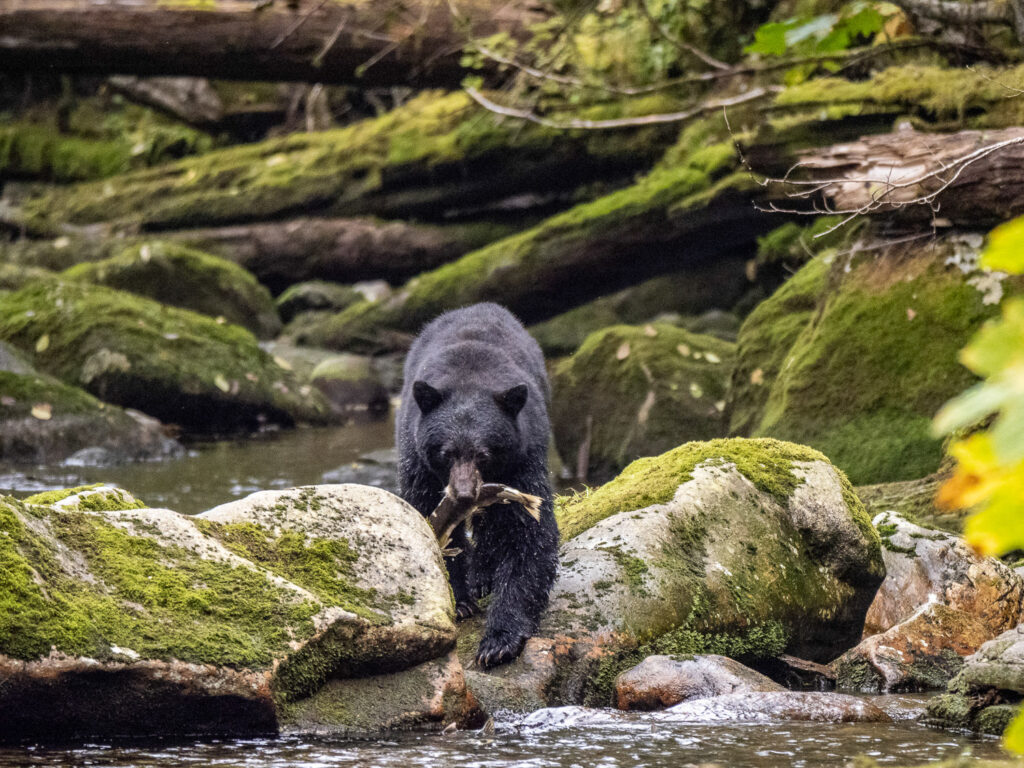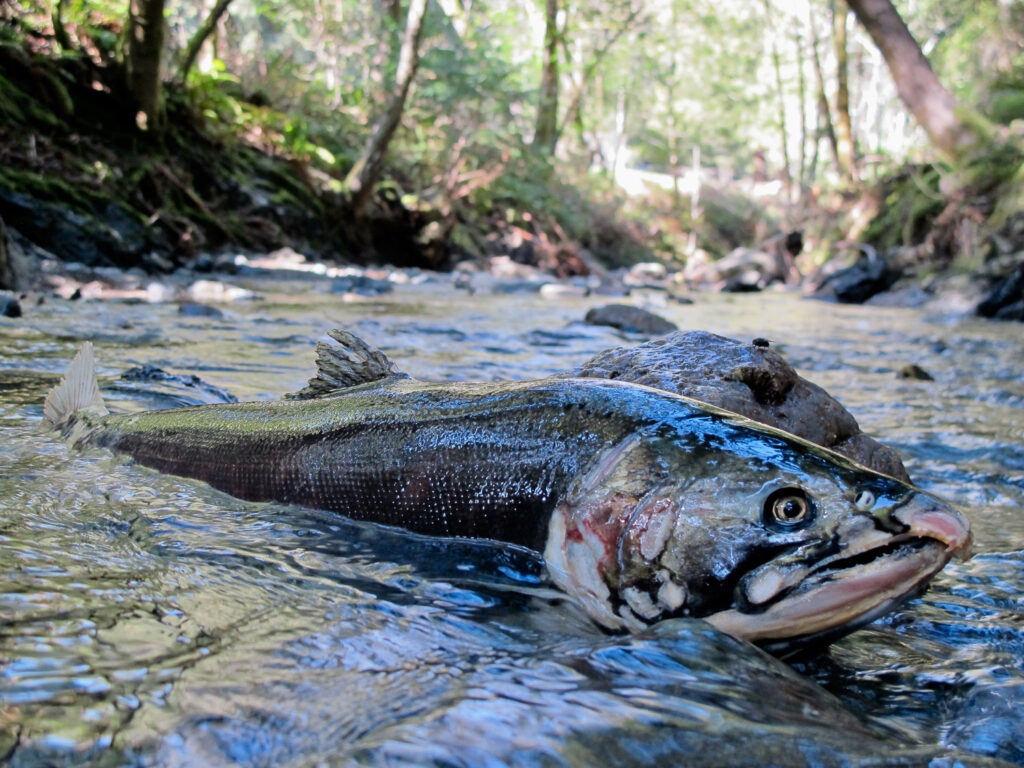Nutrient cycling
Highlights
- Compared to young stands, old forests have more abundant and diverse mosses, lichens and liverworts, including those growing on the ground, logs, tree boles and branches. They play many important functions in forests including nutrient assimilation and cycling.
In old growth forests logs build up on the ground much more rapidly than they decompose which results in the accumulation of organic matter over time (Franklin et al., 1981Franklin, J.F., Cromack, K. Jr., Denison, W., McKee, A., Maser, C., Sedell, J., Swanson, F., Juday, G. 1981. Ecological characteristics of old-growth Douglas-fir forests. USDA Forest Service, Pacific Northwest Forest and Range Experiment Station, Gen. Tech. Rep. PNW-118. More). Total organic matter (live plus dead) keeps increasing as old forests age and is thought to peak around 800 or 1000 years. Large logs contain very large reservoirs of carbon and nutrients, and while in the short-term they are a sink due to slow decomposition, the stored energy and nutrients are passed on to young growth after major disturbances such as fire. In comparison, leaves and forest floor burn more easily than logs resulting in a loss of nitrogen from those portions of the system. Another important ecological role of logs is the provision of sites for bacterial nitrogen fixation. The most valuable logs for this role are those that are large, at advanced stages of decay and with high moisture content, which typically occur in coastal old growth forests.
Lichens
Epiphytic lichens play a unique ecological role in nutrient assimilation and cycling (Price and Hochachka, 2001Price, K., Hochachka, G. 2001. Epiphytic lichen abundance: effects of stand age and composition in coastal British Columbia. Ecol. Appl. 11(3):904-913. More). Lichens that grow on tree branches may be knocked to the ground during storms, where they decompose, leaching nitrogen into the soil which becomes readily available for other plants. They also contribute substantially to nutrient cycling by absorbing elements from the air and releasing them through decomposition or leaching. Some epiphytic species such as lettuce lung (Lobaria lettichens) are able to fix nitrogen, converting nitrogen from the atmosphere into a usable form. Most nutrients captured by these processes represent new nutrient inputs that would otherwise not enter the ecosystem. Part of the added nutrients are incorporated into lichenLichens are complex organisms that arise from the symbiotic relationship between fungi and a photosynthetic partner, typically algae. There are three main types of lichens: foliose, fruticose, and crustose. Foliose lichens are a horizontally growing leafy type of lichen that is always attached to the surface where it is growing. A fruticose lichen is characterized by a coral -like shrubby or bushy growth structure, with upright (pendulous) branches. A crustoselichen is more like a flat crust on a surface or beneath the rock surface or trees. More biomass and only become available upon death and decomposition, but a portion are leached by precipitation and become deposited on the soil surface.
Salmon
As described in the Fish Habitat section, old growth forests are important for salmon habitat, and in turn, salmon contribute to biological productivityForest site productivity is the capacity of a forest to generate products (e.g., wood or biomass) on a certain site with a given tree species and a specified management regime. Site productivity depends both on natural factors inherent to the site and on management-related factors. More of forests through many pathways. If salmon are excluded from a stream, nutrient cycling in the ecosystem is disrupted. Spawning Pacific salmon import marine nutrients to both fresh water and terrestrial ecosystems, with the potential to influence the structure and function of stream systems and wildlife communities (Cederholm et al., 1999Cederholm, C., Kunze, M., Murota, T., Sibatani, A. 1999. Pacific salmon carcasses: essential contributions of nutrients and energy for aquatic and terrestrial ecosystems. Fisheries 24:6–15. More). In coastal British Columbia forests, high rainfall washes nutrients downstream from the headwaters of rivers and streams to the sea, while the upstream migration of spawning salmon replenishes these lost nutrients. Marine-derived nutrients can be released in streams by migrating fish through excretion, gametesGametes are reproductive cells in sexually reproducing organisms that fuse with one another during fertilization. The male and female gametes each contain half the genetic material necessary to form a complete organism. More or their mortality. Stream organisms use these nutrients by three pathways:
- mineralization to inorganic forms, followed by uptake by primary producers, and a transfer of the nutrients up the food chain;
- uptake of dissolved organic matter released by decomposition of carcasses by microfauna; and
- direct consumption of salmon eggs, fry and carcasses.F


